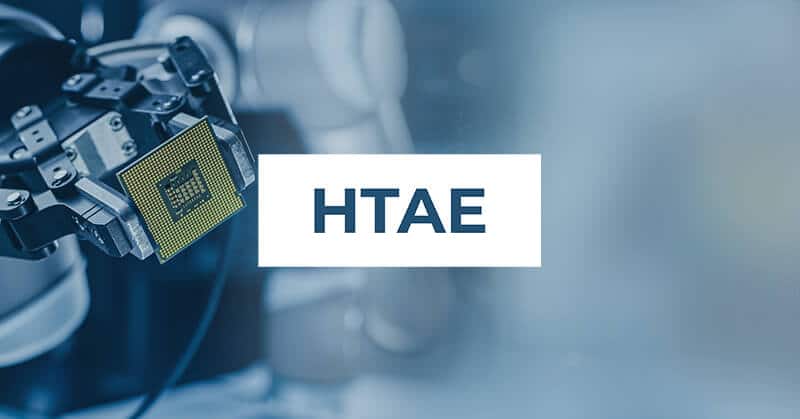By James Learmonth, CFA
Early in my career as a portfolio manager a mentor of mine would tell me that when companies enter a technological arms race, the best place to invest is in “arms dealers” for that tech.
Today the world’s largest tech companies are in an Artificial Intelligence arms race. Microsoft, Google, Apple, Meta and a laundry list of big tech companies are rolling out new generative AI tools. Building those tools requires massive computing power and building massive computing power requires sophisticated semiconductors.
That’s why Nvidia’s stock rose so rapidly in late May and early June of 2023. Their Q2 growth forecasts showed huge revenues and order volumes from big tech companies buying their semiconductors. Now other semiconductor companies, such as AMD and Broadcom, are seeing their stocks rally thanks to AI-related demand.
Semiconductor applications extend well beyond AI, though. They’re key to hardware and software innovations, other tech leaps like blockchain and augmented reality, and function almost as the roads and bridges of modern technology. That’s why we’ve held a significant semiconductor position in the Harvest Tech Achievers Growth & Income ETF (HTA:TSX) since the ETF’s inception. Nvidia has been a holding in the portfolio since 2017, contributing to its long-term performance and now helping Canadian investors capture this key feature in the rise of AI.
Why Nvidia has been an AI winner?
Nvidia might not have been a household name like Apple or Microsoft before this year, unless you’re a gamer. The Silicon Valley company founded in the early 90s spent most of its history making market-leading graphics processing units (GPUs). While other semiconductor manufacturers made central processing units (CPUs), Nvidia focused on the more complex and powerful semiconductors required to render high quality computer graphics. Nvidia was a major player in the video game industry and built significant competitive moats around its GPU technology with a famous intellectual property (IP) stack.
Those GPUs could process more complex algorithms faster, a requirement for rendering graphics. But over the past 15 years, Nvidia has been using its industry leading IP to build chips for generative AI. The potentially world-changing technology behind Chat GPT and other AI tools, requires a high level of processing power to function fast and effectively. So as companies build their AI tools, they’re using Nvidia chips.
While Nvidia has been the leader in AI semiconductor technology, we see a broad range of semiconductors set up to benefit from global tech trends beyond just AI.
Why this tech ETF maintains semiconductor exposure
The HTA ETF has held a significant allocation to semiconductors in its diversified technology portfolio since its inception. We have always believed that semiconductors are one of the key investment themes in global technology developments. We saw how Nvidia was setting up for the rise of AI, but we also saw how important semiconductors are for the digitization of global goods and services.
Semiconductors are a key component of tech devices like phones, tablets, and computers, but they’re increasingly found in somewhat unexpected places. In our daily lives, new fridges, ovens, and cars are all using semiconductors. In business, medical technologies, industrial tools, and logistics transport vehicles all rely on semiconductors. Major tech leaps like EVs and autonomous vehicles, as well as industrial automation, require semiconductors. The flow of semiconductors is becoming almost as important to the global economy as the flow of crude oil.
While Nvidia is a specialist producer of GPUs and AI chips, other semiconductor companies such as Broadcom or AMD have different specialties. While they have AI-facing technologies, their semiconductors are also used for the myriad applications modern technology requires. By investing in a set of leading semiconductor companies, we can ensure that HTA is exposed to as many different applications as possible.
How Semiconductors fit in HTA’s broader strategy
Semiconductors are just one aspect of the technology sub-sectors captured by HTA. Our ETF combines a portfolio of 20 large-cap technology companies, diversified across subsectors, to offer Canadian investors exposure to major tech growth themes.
At the same time, the ETF uses an active & flexible covered call option strategy to generate a high monthly cash distribution for unitholders.
We take a big tech + income approach to create an ETF for long-term investors, with a wide array of potential contributors to total returns. Technology is a growth-oriented sector, and that can often come with some volatile swings to the upside and downside.
We offset that volatility by focusing first on what we see as the leading businesses. Those are the companies with robust financials and market share that can outlast market and economic cycles and even grow despite the macro environment. From there we diversify, by holding companies exposed to different trends and demand forces our ETF aggregates out to generally deliver greater stability than single tech stocks. We take that approach with each subsector, including semiconductors, diversifying across a set of well-positioned semiconductor companies.
Finally, our covered call option strategy can actually monetize market volatility. When markets are volatile covered call options premiums are generally worth more. Our covered call options strategy generates high monthly income by selling call options to generate premiums. When a company or sector experiences higher volatility we can offset that volatility by generating higher premiums.
The income then paid by HTA is a key component of the total returns of the ETF, which combines cash distributions received with price appreciation of the ETF investment.
The end result is a broadly diversified ETF with a high monthly income distribution and exposure to major technology themes. Semiconductors are a key component of that strategy and one that in both the short and long-term we believe investors will want to consider.

James Learmonth, CFA
James Learmonth is the Senior Portfolio Manager at Harvest ETFs. James brings over two decades of experience, covering a wide range of equities and covered call options trading strategies. He currently leads management of Harvest’s Information Technology, Global Brands, and US banking strategies and plays a key role in the execution of our covered call options trading.












